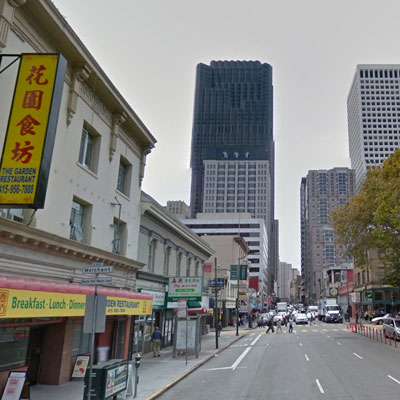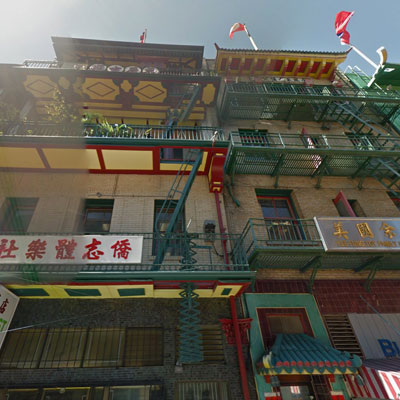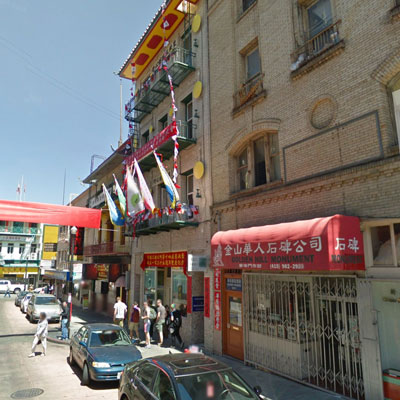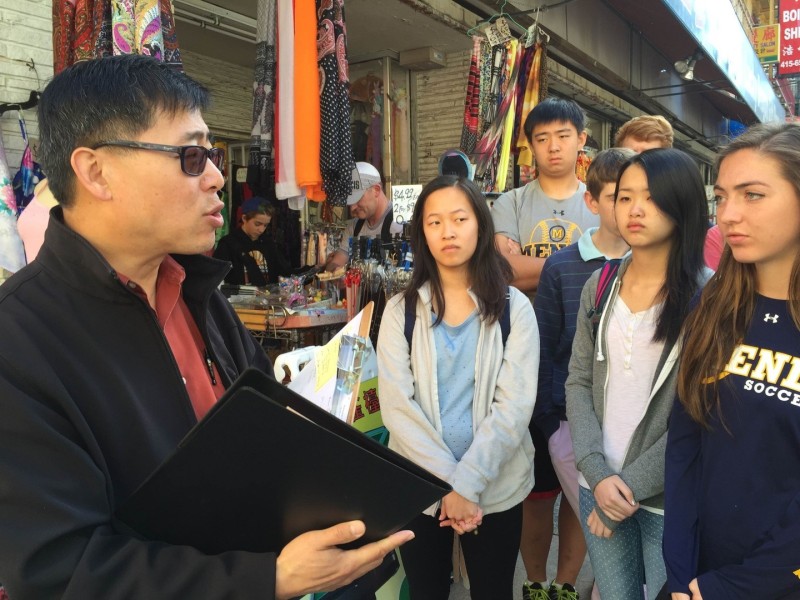So, back to the architecture. The story goes that after the 1906 earthquake, city leaders wanted to move the Chinese to the city’s outskirts and claim the valuable real estate for something else. After negotiations, it was settled that the Chinese would get to stay but would relinquish the right to design and build Chinatown. Instead, it was built to attract tourists.
This backstory is why one historian has described Chinatown as an “Oriental Disneyland.” Or, as Ow-Wing says, Chinatown is permanently wearing the equivalent of a “clown outfit.”
The Chinese Culture Center of San Francisco gives tours to about 4,000 students and tourists a year. Public tours start at the Hilton San Francisco Financial District, 750 Kearny St.
Currently tours are at Tuesdays and Thursdays at 1 p.m., and Saturdays at 10 a.m. There are three tour programs: Dynasty to Democracy, Chinatown Art Walk and a Tale of Two Chinatowns.
Here are a few stops on Ow-Wing’s Dynasty to Democracy walking tour:

Bounded by Clay, Washington and Kearny streets, and Walter U. Lum Place
Ow-Wing on Portsmouth Square: “This was the power center of old San Francisco. This was where all the rich people, the politicians, anyone who had to do with anything in San Francisco hung out here.”

125 Waverly Place
Ow-Wing on the Tin How Temple, one of the oldest temples in the state: “How it works is this: It is a legitimate temple. People do come here to do their thing. But they’re really open, they’re very friendly, they’re fine with visitors coming in as well. We just have to be really, really, really quiet.”

Waverly Place
Two-block street between Washington and Sacramento streets; Home to many family, or benevolent, associations
Ow-Wing on the family associations: “Chinatown had to kind of manage itself for about 100 years. … So 100 years ago, you’re a young man, by yourself, over here. You’re coming to America to work. You land here, you don’t know anyone, but your name is Yee. You’ve got this little piece of paper that says go find your family association. So you’d actually come here. You’d be able to stay here a couple nights. They’d find out where you’re supposed to be working. You’d make some friends here.”



